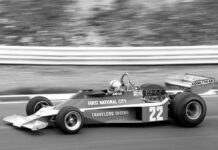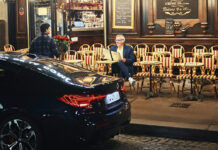August is the month of the Oldtimer Grand Prix. Traditionally, the legendary race of 2-seater sports cars race begins on Saturday evening at dusk and ends in the dark with a brilliant fireworks display. For me it is the highlight of my annual racing season.

For 25 years I was there as a spectator. Then I photographed for a historic motorsport magazine and was finally able to afford my first vehicle with which to participate. What an experience and what a disappointment at the first technical failures in my early days.
Now, in 2023 it was the 50th anniversary of the event and I participated for about the 15th time.
Just like in the past, it is still a duel of different philosophies today. Lightweight and aerodynamics versus powerful and sometimes large-volume engines with significantly higher weight. While a Lister ( with Jaguar or Chevrolet engine) pushes past almost everything on the straight, a 400 kg lightweight like the Lotus XI is possibly already ahead again when braking for the next curve…
So a 1200cc Lotus, Lola or Elva could and still can compete against 3.0 Litre Ferraris and Maseratis. My car, the Elva MK 7S has a great racing history with Frank Gardner amongst others and is fitted with a 2 litre BMW engine with twin carburettors, dry sump lubrication and a Hewland five speed gearbox. In 1964, 15 of these cars with BMW engines were build.
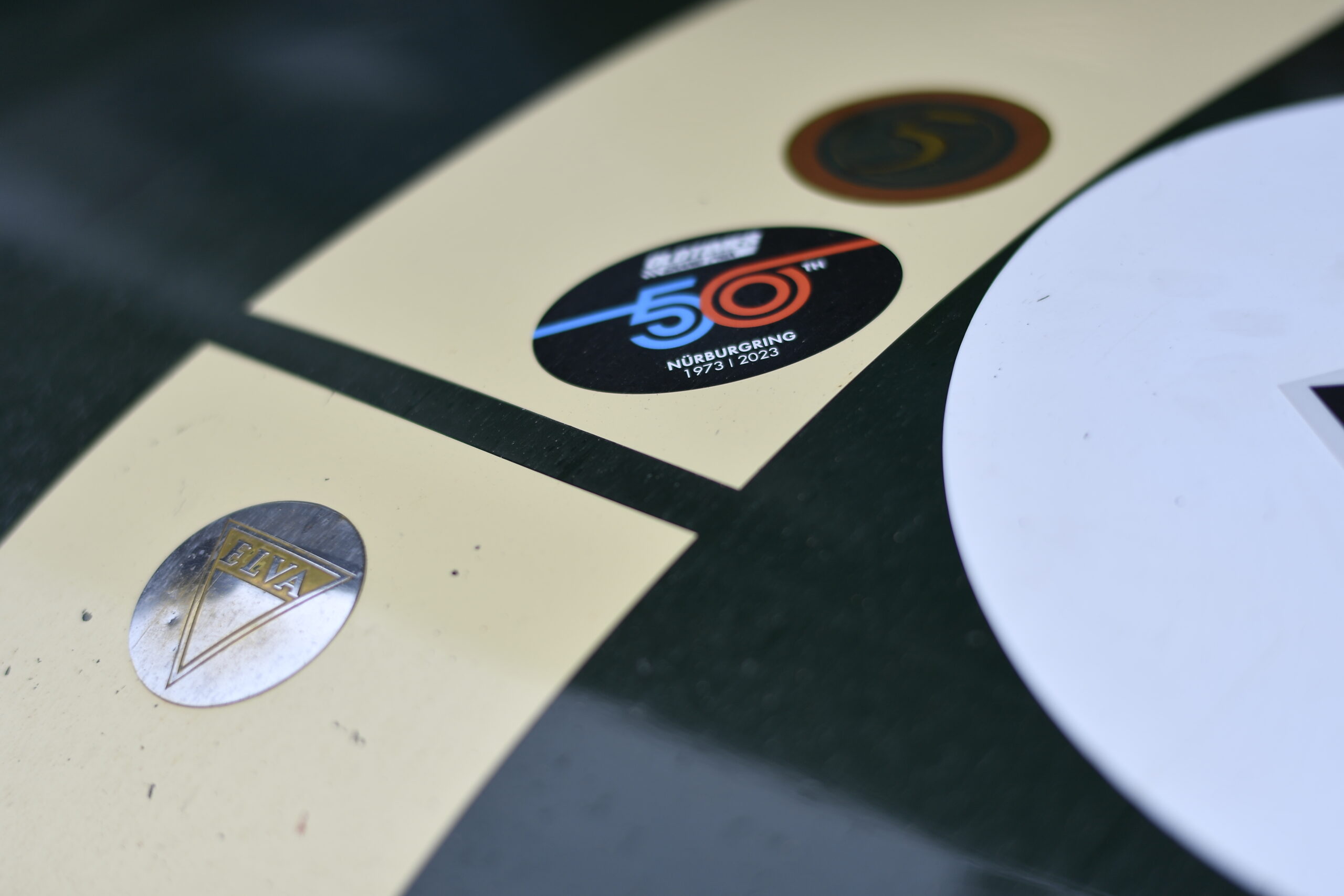
Everything is carefully prepared weeks before the event. Fluids are changed. All mechanical components are checked, tightened and marked with threadlocker. Small faults are always noticed and corrected. New Dunlop Racing tyres are ordered in England. These are mandatory for the series. The old radial tyres are not always available – a matter of luck! The assembly, another challenge. The magnesium rims, which are no longer available, can no longer be clamped and balanced on any modern machine…
Carburettor and engine tuning are again optimised and measured on the test bench. My engine is very tame, but has a nice torque curve, is very reliable and uncomplicated.
Actually, the evening race is only for cars built up to 1961. It is probably thanks to thespecial individual racing history of my Elva (including a victory at the Mediterranean Grand Prix in 1964 with the Australian F1 driver Frank Gardner) that the car is accepted in the “so-called” invitation class.
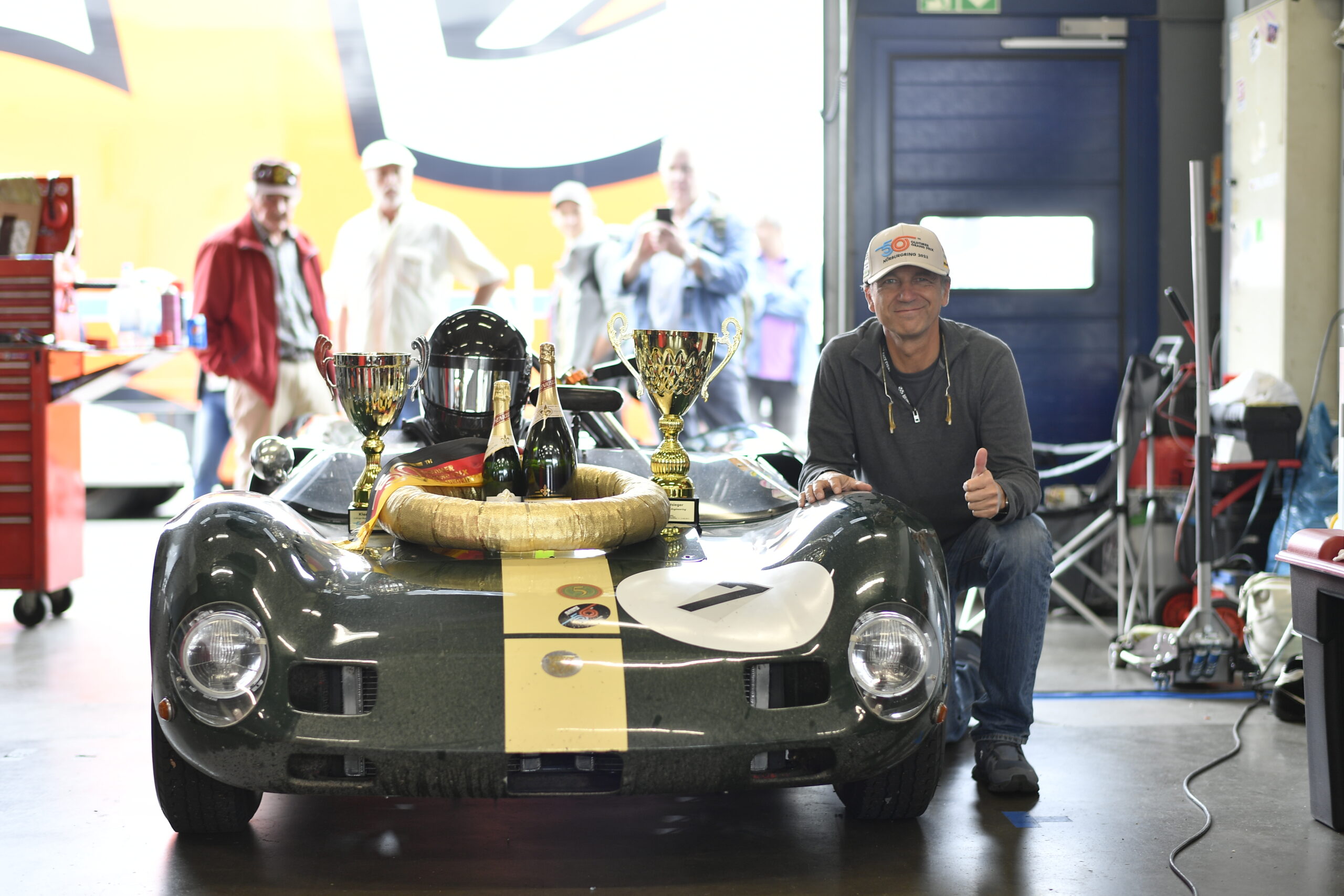
A few days before the race, the provisional list of participants appears. Of course, this is studied in detail and the anticipation rises for fantastic international vehicles in the field such as the Maseratis 300 S and A6CGS, Porsche 718 RS or 904, the rare Lotus19 with the fantastic Coventry Climax FPF double camshaft engine (which was also used in Formula 1 at the time). Other exotics include the wonderful Cooper with a Maserati rear engine or an Alpine A210 especially built for Le Mans use or the supercharged Mercedes 300SLS Porter.
On Thursday, the journey to the Nürburgring takes place. All the formalities are completed, such as the obligatory driver briefing, installation of a transponder, start numbers and a first test run on the track. (As my car is not road legal, it is only possible to determine here whether everything really works).

Friday afternoon the race starts: 40 minutes of qualifying – the best lap times decide the respective starting position. You have to do at least two measured laps, my strategy: to be the first on the track, if possible, in order to have a empty track. The more cars there are in front of you, the more you are hindered from doing a fast lap.
My team, the crew of Mec Auto from Belgium actually managed to position my car first at the exit of the pit lane.
Not an easy task with almost 50 cars in the field. After the lights turn green, the gearbox oil, brakes and tyres are warmed up for a lap. Then it’s off on the hunt for the fastest possible laps. Since I don’t have a watch in the cockpit, I don’t have any information, but the team holds out a board that shows me the lap time of my last driven lap. Subjectively, I had the impression that I had managed two quite good laps. In the third lap, however, I was already running into other cars and no longer had the impression that I could improve my time. So I came back into the pits after the third lap. The mechanics immediately measured the warm tyre pressure to get information for possible corrections for tomorrow’s race. Now the waiting begins to see what times the competitors will set and where I will be at the start.
Finally it was P3! The best position I have ever achieved in his race so far. In front of me the mercilessly fast, dark green Ginetta G4R from a Danish team around Palle Birkelund. In front of me on the left is the prototype Aston Martin DP214 driven by the English professional, Simon Hadfield. The car is looked after by Aston Martin factory mechanics from England. On the second row of the grid, I am on the right on the inside (note: it is much more comfortable to drive there at the start. The first bend after the start/finish is a tight 2nd gear bend to the right. If you are on the inside there, you are on the safer side). To my left is a very fast Lotus 19, also from a Danish team.

Despite the only three laps driven in the practice session, the car is again completely checked by the mechanics. The remaining petrol is also pumped out and, for weight reasons, only the calculated amount for the 65 minutes race plus a small safety reserve is filled in. For the second time, the tyres have spun slightly on the rear wheel rims, so they go to the racing tyre service present for re-balancing.
Then the long wait begins for the actual race start, which is run “on the fly”.
If nothing happens and the cars hold out, it is clear that it will be a close and exciting race. The first three cars are all less than a second apart with their lap times…
Driving at the back of the field is relaxed, as long as you watch out in the rear-view mirror for faster cars lapping you.
Driving in the middle is nice! But right at the front you fight with a knife between your teeth! Anyone who thinks that the historic vehicles are spared here is under a misapprehension.
Saturday evening, 12 August 20h15 – the cars that have already been warmed up are lined up in the starting order at the pre-start. There is some time to chat briefly with the other drivers. Among the drivers there are also well-known professionals like Frank Stippler or Claudia Hürtgen.
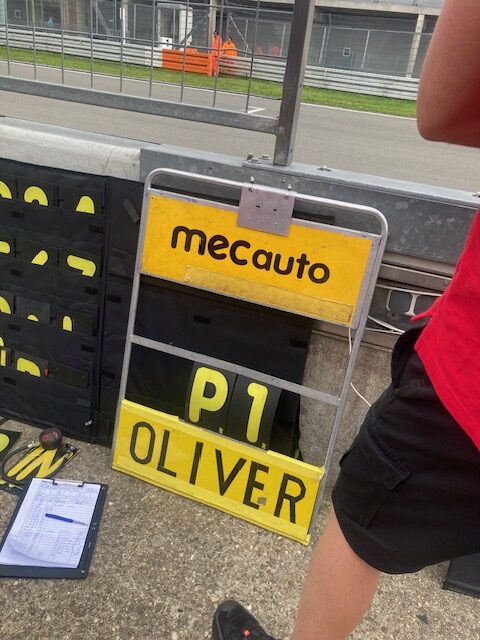
At the latest when the board shows: 5 minutes it is time to put on the fireproof face bonnet, gloves and helmet. The mechanics pull the 6-point straps above me so tight that I almost lose my breath – after another minute I no longer notice this. A Hans system allows my head only limited rotation to the right and left. Besides the roll bar, it is supposed to protect my neck in case of a rollover.
Then it’s off to the introductory lap on the race track. Dusk begins to fall, the lights are switched on. Behind the lead car, the tyres are warmed up with quick steering movements, and the brakes and gearbox oil are also brought up to temperature.

Shortly before we turn onto the start-finish straight, the lead car pulls out and the two leading cars, the Aston Martin and the Ginetta G4R set the pace at the flying start.
So it goes in exact order and position towards the traffic lights above the start finish straight. Only when the the lights turn green is it “pedal to the metal”!
In a group of four, we shoot towards the first curve. Who will downshift faster and brake later?
I managed to pull away from the Aston Martin before the first corner and stay on the inside. But the white Lotus 19 is also past the Aston Martin and also pushes past me into the first corner! The Ginetta charges away unchallenged at the front. Behind it, the lightning-fast white Lotus 19 and I are still at odds as to which of us deserves second position, both pursued by the Aston in P4.
Now the motto is to keep up, no manoeuvres with the crowbar – a 65-minute race is not decided in the first corners.
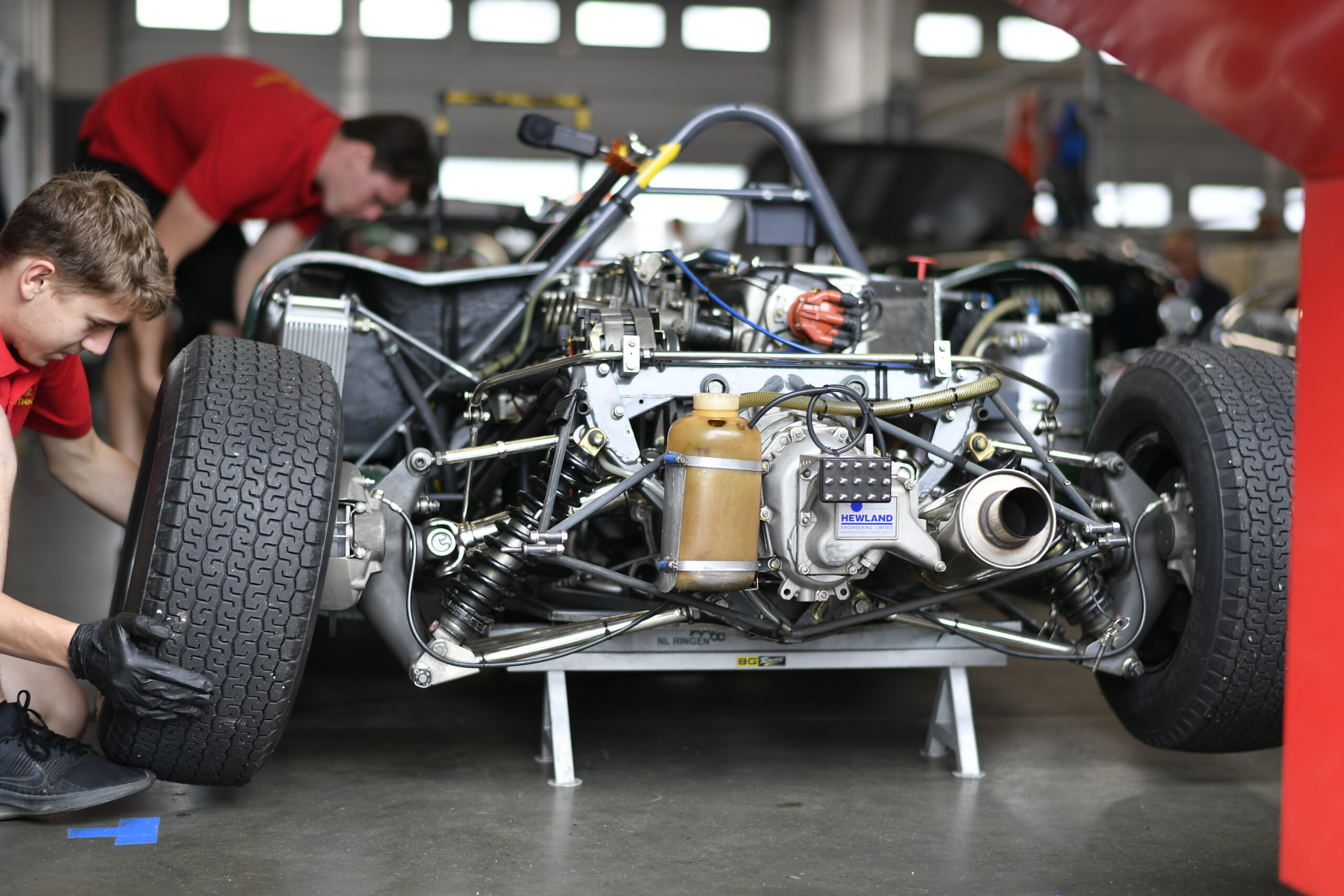
My strategy is to try to stay concentrated over the whole distance and to drive consistently fast lap times. Once I’m in a corner, I’m already concentrating on the next one.
I was able to win the duel against the Lotus 19 quite quickly – P2!
Now I have to follow the Ginetta and put pressure on it from behind. I try to drive both to the front and to the rear. I can’t tell who is following me from the headlights in the rear-view mirror. Is it the lightning-fast white Lotus or the Aston Martin? Both just lurking for me to make a mistake.
My eyes are having more and more trouble with the advancing twilight, my small A4 headlights are desperately trying to illuminate the track in front of me.
Gradually I am able to catch up with the Ginetta. The driver starts to get nervous and brakes more often and less precise.
Something is dragging under his vehicle and sprays bright, metallic sparks into the night. As I continue to unlock and apply pressure, I worry that something could comeloose from his vehicle and fly into my open and unprotected cockpit…
A few laps later it happens: The leading Palle Birkelund made a mistake and spun at the exit of the 180 degree Dunlop curve. He can’t catch his car, it spins and shoots off to the right, giving me a clear run. P1 shows my team’s board, and now it’s a matter of staying concentrated and not making any mistakes.
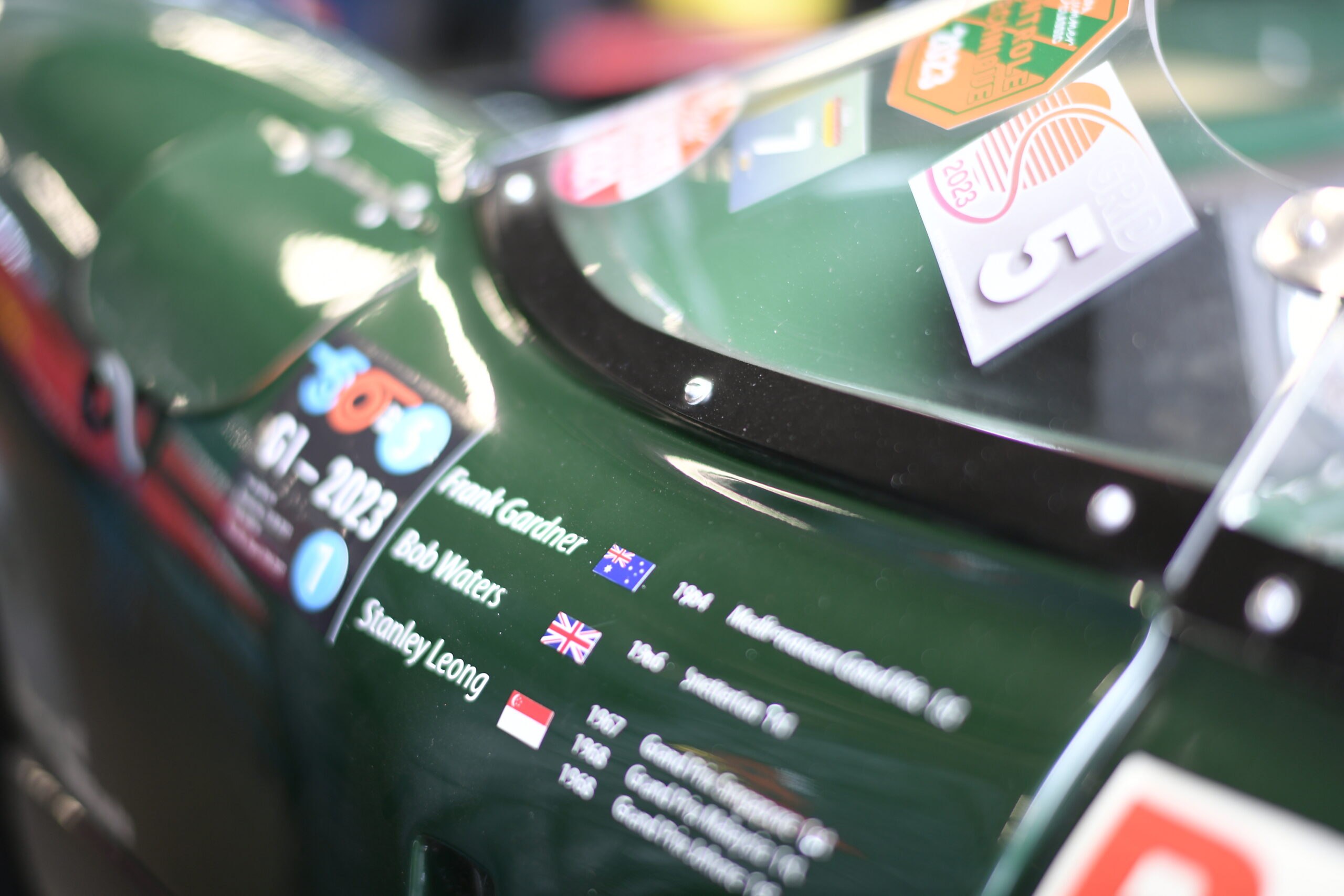
The obligatory pit stop is coming up. This must be completed between the 8th and 16th race lap. From the entry to the pit lane to the exit, a time of 85 seconds must not be undercut (otherwise you will receive severe time penalties). Furthermore, a speed of 60 km/h must not be exceeded within the pit lane. Valuable seconds can also be given away or gained during the pit stop. The teams that drive with two
drivers (like the Danish Ginetta team) use this stop for their driver change. Actually, the stronger drivers or professionals are always used in the second half of the race in order to drive the cars to the best possible final positions. I don’t share my driver’s seat but drive the distance alone.
My pit stop went according to plan. The headlights of the pit lane give me the opportunity to briefly check my instruments, which are otherwise unlit and therefore no longer readable for me in the dark. I gratefully accept a cold water bottle with a drinking line.
The mechanics’ thumbs up give me the good feeling that everything is in order.
After my short standstill/forced break, I immediately returned to the race. Now I know that the better drivers are still to come…
In the increasing darkness, my eyes don’t get any easier. Every lap there are other cars to overlap.
On the one hand, the aim is to pass quickly without endangering others and myself. Some of the drivers are very attentive and let me take the racing line. Other drivers don’t even see me in my low car, so that I sometimes have to overtake with two wheels on the meadow.
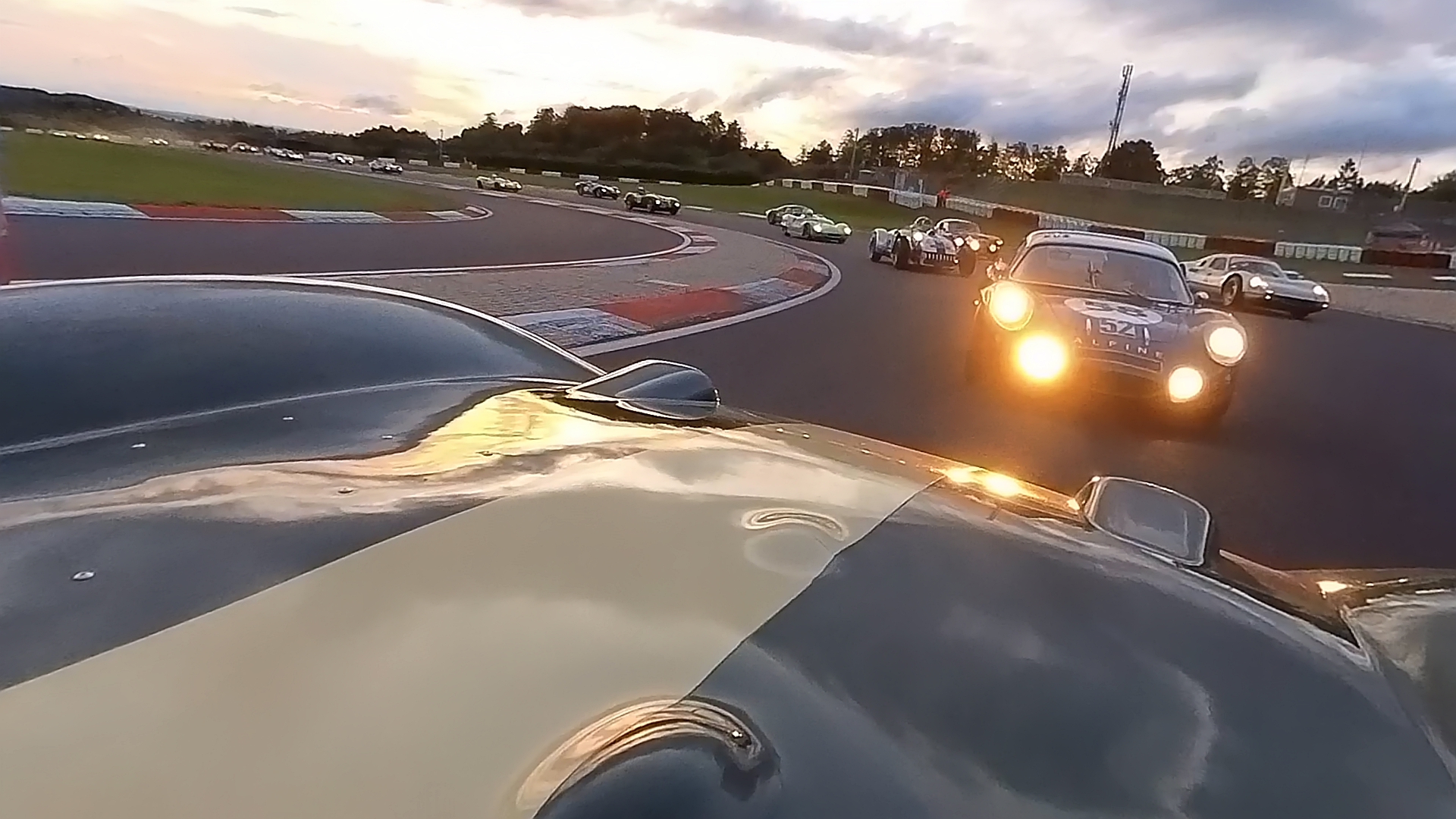
Every time I cross the finish line, I look at the time remaining in the 65 minutes of racing and can hardly believe that I am actually in the overall lead. Finally, the clock was showing 4 seconds left when I crossed the finish line for the 27th time – so one more race lap before I actually see the black and white waved chequered flag as the first one. Hard to believe, but my Elva (The name comes from the quote: “she runs”) drove me to the overall victory.
Behind on P2 were the Danes Birkelund and Borch-Christensen with their fast Ginetta and in third place Rüdiger Friedrichs with a Jaguar C-Type.



